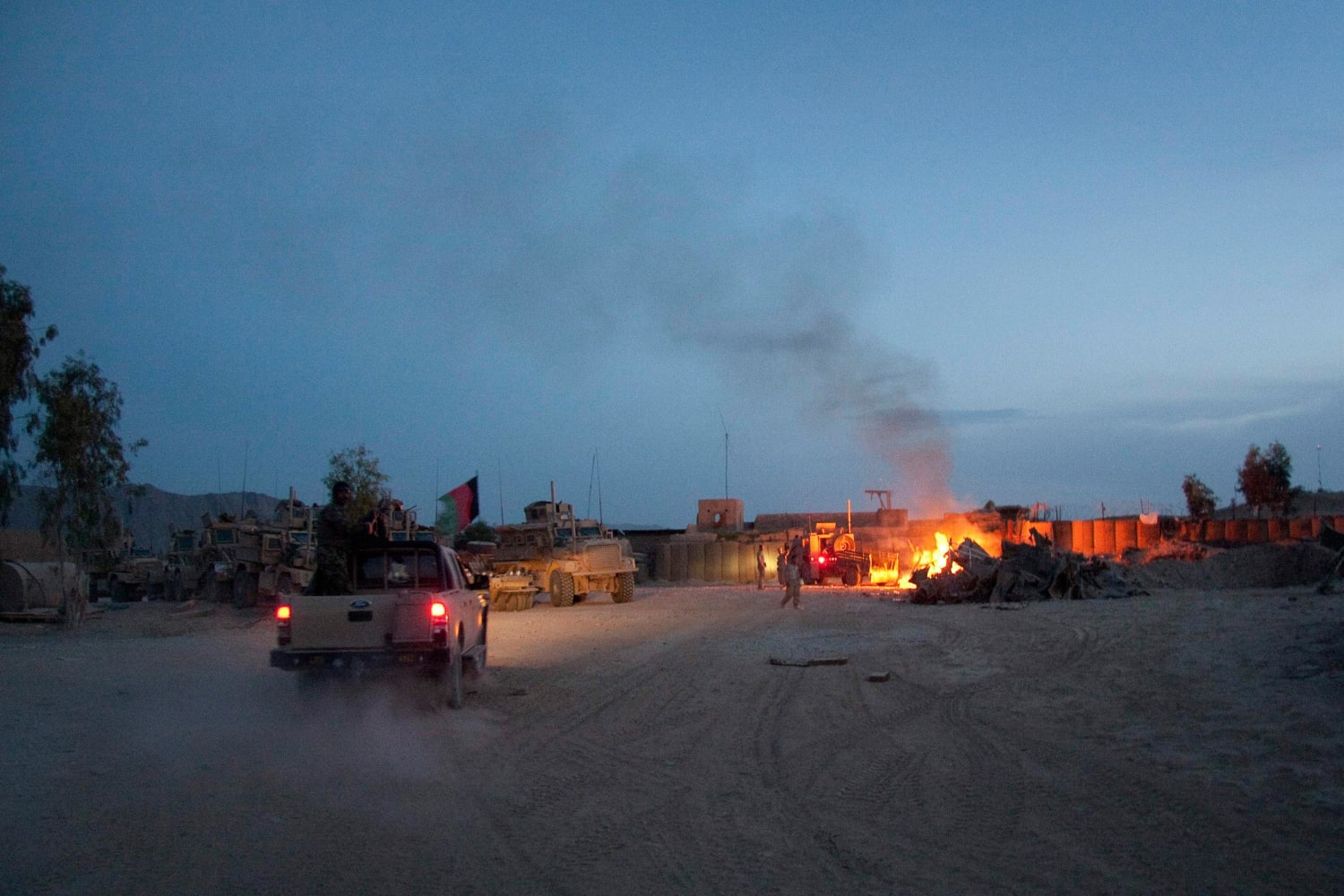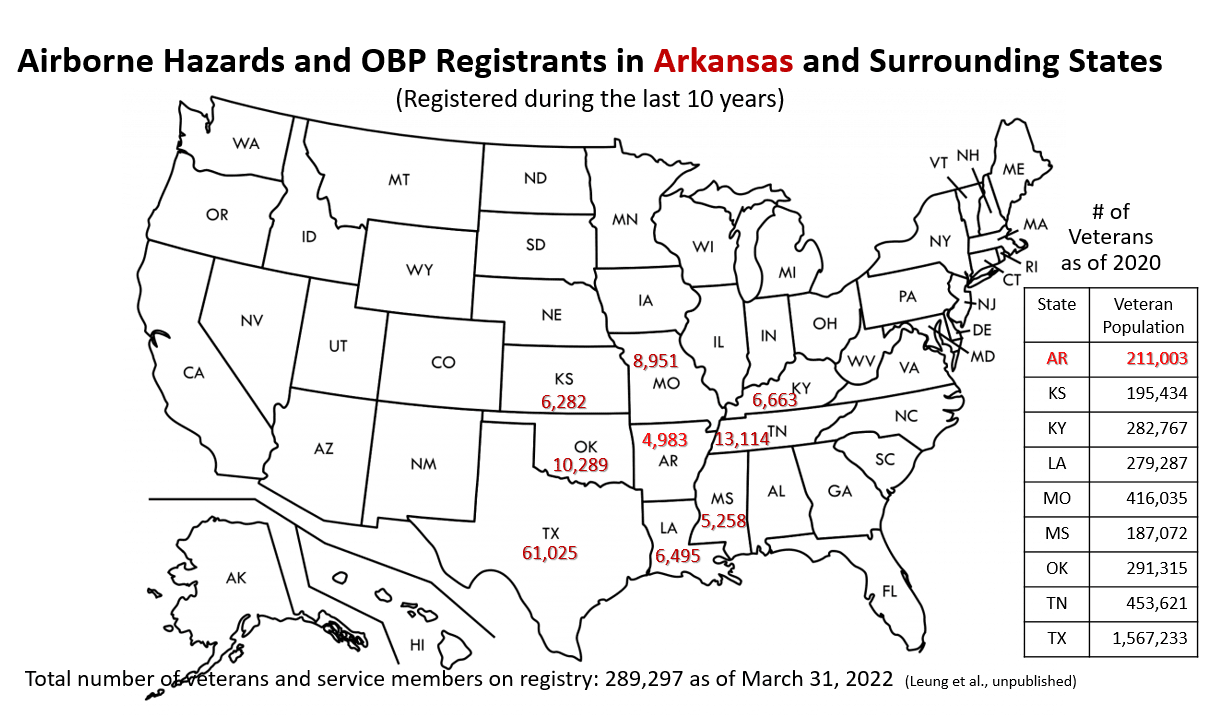Burn Pit Registry - Master Sergeant Daryl Sterling, an equipment operator with the 332nd Expeditionary Logistics Readiness Squadron, throws unserviceable clothing items into a fire pit in Balad, Iraq, in 2008.
WASHINGTON, DC - The potential cost to the VA of cancer related to deployments to Iraq or Afghanistan increased this year when the US Department of Labor decided to rule the law. exposure to outdoor hot springs can cause cancer in soldiers.
Burn Pit Registry

About 150,000 veterans have signed the VA Airborne Hazards and Open Burn Pit Registry to record their concerns about particulate matter during deployment.
Raul Ruiz's Bill Would Classify Burn Pit Exposure Alongside Agent Orange
A recent case is Veronica Landry, a civilian contractor who served as a mental health, welfare and recreation specialist at two forward operating bases in Mosul, Iraq, from March 2004 to February 2005. and while stationed in Iraq, he was a contractor for the Department of Defense. managing outdoor burn pits to dispose of trash, tools, tires, and sometimes hazards. Landry developed bronchiolitis, which his doctor said was due to exposure when he was undergoing a lung biopsy.
The court's decision does not affect the VA, which did not comment on the matter. "VA benefit decisions are made on a case-by-case basis," said Patricia R. Hastings, DO, MPH, deputy chief counsel for VA Post-Deployment Health Services. "Our judges consider all the facts and evidence, including medical evidence, when making these decisions."
Although making a claim based on the burn pit and other methods has not been made easier since the decision, it has become easier to access the Cancer Registry and Open Health and research related to cancer.
Soldiers who have been deployed to the Southwest Asia theater since August 2, 1990 will enter the registry, although it is called the "burn pit registry," and will be eligible for a variety of conditions. environment. Many pre-9/11 veterans had to wait months before entering the registry to manually verify their deployment history, but recent improvements have eliminated much of the delay by connecting register with more complete enrollment records, the VA said. As of June 15, 144,000 soldiers have signed up, and the number is growing by the thousands every month.
Veterans Affairs' Burn Pit Registry Needs Improvement, Officials Say
"When veterans submit their questions, they can set up a registry health evaluation," said Martin Allen, a post-deployment staff assistant at the VA Health Service, who helps soldiers to join the register. The trial is free.
The registry "provides an opportunity for providers to discuss health concerns and potential findings with the military," Hastings told US Medicine. In addition, VA and DoD are conducting several studies to determine the effects of aviation accidents on deployed personnel.
"A major contributor to ambient particulate matter (PM) in Southwest Asia is the infiltration of dust and soil from the desert floor. Outdoor hot pits were used during the Desert Shield/Desert Storm, Operation Enduring Freedom (OEF), Operation New Dawn (OND). ), and OIF. Burn pit emissions contributed to the burden of air pollutants, including air and the PM, where the workers were found released. It is difficult to separate the natural manifestations and the burning pit, "said Hastings.

Future soldiers may not have to worry about burn pits. According to Hastings, DoD has "replaced burn pits with incinerators in a distributed environment."
The Burn Pit Registry: Reaching Milestones In 2017
Several studies have found an increase in chronic respiratory disease in veterans of the Iraq and Afghanistan wars, although the relationship to deployment varies. The prevalence of asthma in this group of veterans tripled between 2003 and 2011, and the prevalence of obstructive pulmonary disease and interstitial lung disease, or pulmonary fibrosis, doubled. the authors concluded that the findings "point to an association between reporting and an increased risk of chronic lung disease." ” in this cohort.1
A recent study attempted to identify the characteristics of veterans affected by interstitial carcinoma. Researchers used the VA Corporate Data Warehouse to analyze the records of 2,642 veterans treated for interstitial cancer in the Pacific Region (VISN 6) between January 2008 and January 2013. A previous analysis published in the American Journal of Respiratory and Critical Care Medicine found that 44% of veterans diagnosed with ILD received oxygen therapy and 24% took immunosuppressive therapy.
The most common comorbidities were diabetes mellitus (37%), obstructive pulmonary disease (33%), coronary artery disease (30%), and gastroesophageal reflux disease (29%). Two-thirds of patients were white, 95% were male, and the median age was 71 years.
A type of interstitial lung disease, idiopathic pulmonary fibrosis, causes inflammation of the lungs and is associated with significant morbidity and mortality. Until now, there have been few effective treatments for the disease. Researchers led by Elizabeth Frances Redente of the VA Eastern Colorado Health Care System are very optimistic that they have found a way to improve the resolution of pulmonary fibrosis by using tumor necrosis factor-alpha (TNF- alpha), many soldiers will benefit.
Military Burn Pit Exposure Health Effects And Symptoms
Exposure to dust and smoking, common in military personnel, increases the risk of developing idiopathic pulmonary fibrosis. "In addition, recently discharged military personnel exposed to secondhand smoke and pollution are at increased risk of IPF as they age. This is a problem that affects the US military," e the researchers said.
A previous study by the same group indicated that administration of TNF-alpha to mice at the peak of the bleomycin-induced fibrosis response accelerated the resolution of lung lesions, and on the other hand, it was also found that the deficiency of TNF-alpha worsened the fibrosis resolution. Researchers are investigating several hypotheses related to these findings, including that TNF-alpha may cause changes in macrophage functions that stimulate tissue remodeling and remodel lung architecture. . They hope to translate the work into human mouse models of fibrosis using IPF-derived myofibroblasts.
In addition to these studies focusing on pulmonary fibrosis, "VA and DoD are collaborating with various private agencies to conduct research on the adverse health effects associated with hit the hot spots outside," Hastings said.

1Pugh MJ, Jaramillo CA, Leung KW, Faverio P, Fleming N, Mortensen E, Amuan ME, Wang CP, Eapen B, Restrepo M, Morris MJ. Increasing incidence of cancer in veterans of the wars in Iraq and Afghanistan. Mil Med. 2016 May;181(5):476-81.
Congratulations To Our Partner, Burn Pits 360!
2Bedoya AD, Pleasants R, Boggan J, Seaman D, Howard L, Reichman A, Welty-Wolf K, Tighe RM. Interstitial cancer trends in the Mid-Atlantic Veterans Affairs Regional Network. Am J Respir Crit Care Med. 2017;195:A1134.
Smokers who have stopped smoking are not helped by bilateral bronchodilators The study shows a regional difference in hepatocellular carcinoma treatment and survival rate... More needs to be done despite the 'great' effort VA to improve COPD outcomes Even in chronic patients, many facilities accept a second dose of COVI. .. Veterans Affairs' nearly decade-old registry to track burn wounds and help veterans care for those injuries isn't meeting any of those goals, according to research by independent health professionals recommend major changes to the practice.
"[Our findings] conclude that there are no improvements or improvements that the registry can serve as a population health surveillance system," said Kristen Olson, director of social research at the University of Nebraska-Lincoln. and a member of the National Academies. . Committee on Science, Technology and Medicine, which analyzes the registry.
"Because registry members do not have the right to update their health information, the registry cannot achieve this goal or monitor health patterns over time."
Burn Pits Bill Update
Olson's comments came at a meeting Friday to unveil the study, which Congress ordered after concerns arose about harm to aircraft and the effectiveness of the registration of the open burning pit.
Vets can apply for all PACT Act benefits after the VA fast-tracked the law, with Congress saying officials could wait until 2026 to implement some claim, but White House officials have told the VA to move quickly.
Since its launch in 2014, more than 317,000 veterans have signed up to the registry. According to VA officials, the goal is to "use the data for veterans and help us better understand the health effects of aviation accidents. military operations."

But military advocates have complained for years that registration is so restrictive and difficult that it offers little benefit to those who join.
Nasem: Reassessing Va's Airborne Hazards & Open Burn Pit Registry: Open Session
According to the Department of Defense, approximately 3.5 million soldiers from recent wars have been exposed to toxic fumes from outdoor burn pits that can cause health problems.
Committee members studying the registry said more than 130,000 people started enrollment but did not complete it, violating the VA's goal of keeping accurate records of veterans' deaths. .
It's also voluntary, meaning that people who choose to participate may not be well-represented in the older population.
"The registry's goal of researching the effects of aviation accidents and conducting population health surveillance is unachievable," said David Savitz, professor of epidemiology at Brown University in Rhode Island. Island.
The Gulf War Burn Pit Registry: Are You Covered?
Ruger 556 review, vg6 epsilon 556 review, msar stg 556 review, sinn 556 review, sinn 556 i review, meridian 556 review, eotech 556 review, precor efx 556 elliptical review, benchmade 556 review, surefire sfmb 556 review, precor efx 556 review, sinn 556 anniversary review

0 Comments